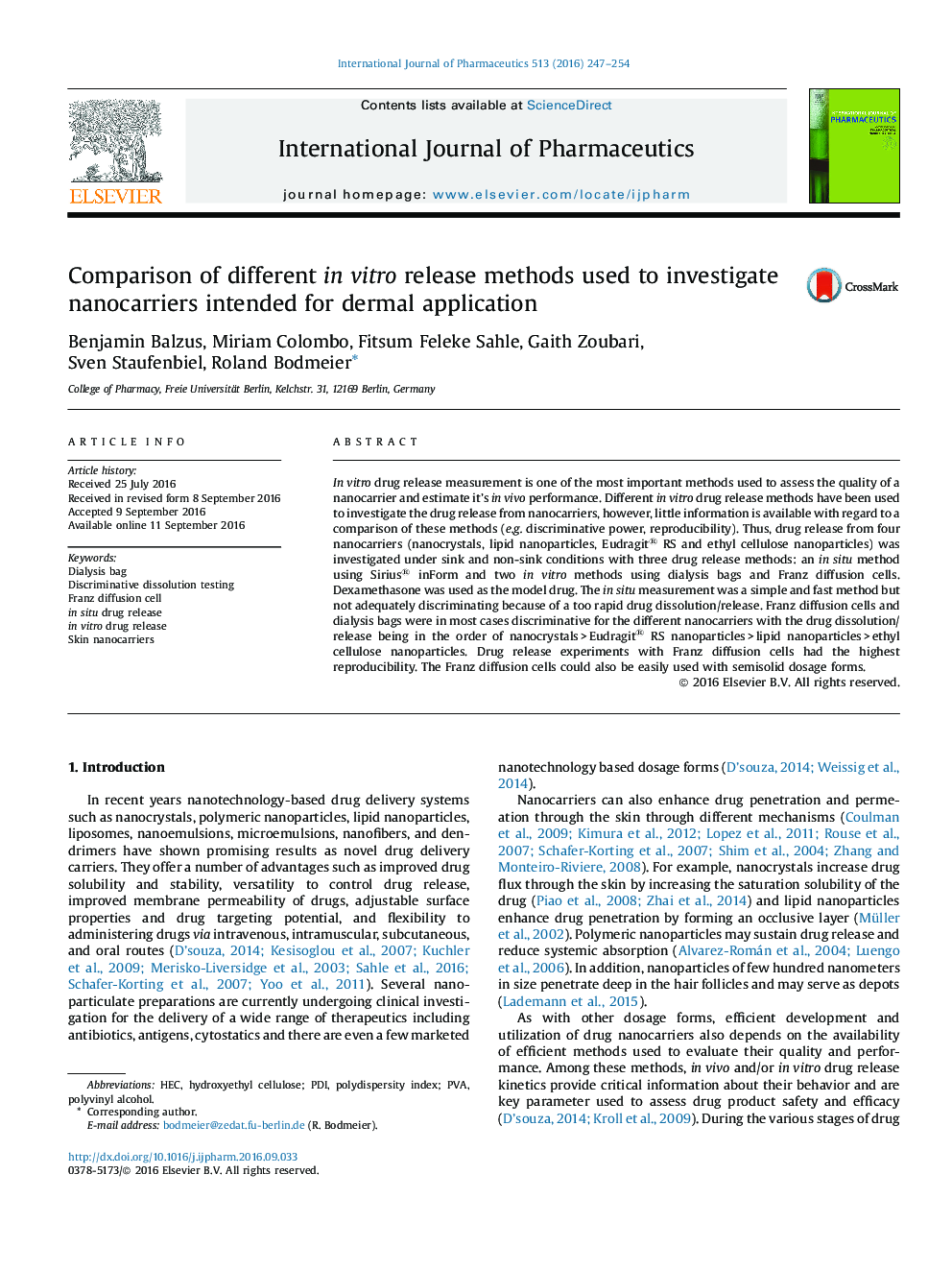| Article ID | Journal | Published Year | Pages | File Type |
|---|---|---|---|---|
| 6481879 | International Journal of Pharmaceutics | 2016 | 8 Pages |
In vitro drug release measurement is one of the most important methods used to assess the quality of a nanocarrier and estimate itÌs in vivo performance. Different in vitro drug release methods have been used to investigate the drug release from nanocarriers, however, little information is available with regard to a comparison of these methods (e.g. discriminative power, reproducibility). Thus, drug release from four nanocarriers (nanocrystals, lipid nanoparticles, Eudragit® RS and ethyl cellulose nanoparticles) was investigated under sink and non-sink conditions with three drug release methods: an in situ method using Sirius® inForm and two in vitro methods using dialysis bags and Franz diffusion cells. Dexamethasone was used as the model drug. The in situ measurement was a simple and fast method but not adequately discriminating because of a too rapid drug dissolution/release. Franz diffusion cells and dialysis bags were in most cases discriminative for the different nanocarriers with the drug dissolution/release being in the order of nanocrystals > Eudragit® RS nanoparticles > lipid nanoparticles > ethyl cellulose nanoparticles. Drug release experiments with Franz diffusion cells had the highest reproducibility. The Franz diffusion cells could also be easily used with semisolid dosage forms.
Graphical abstractDownload high-res image (110KB)Download full-size image
